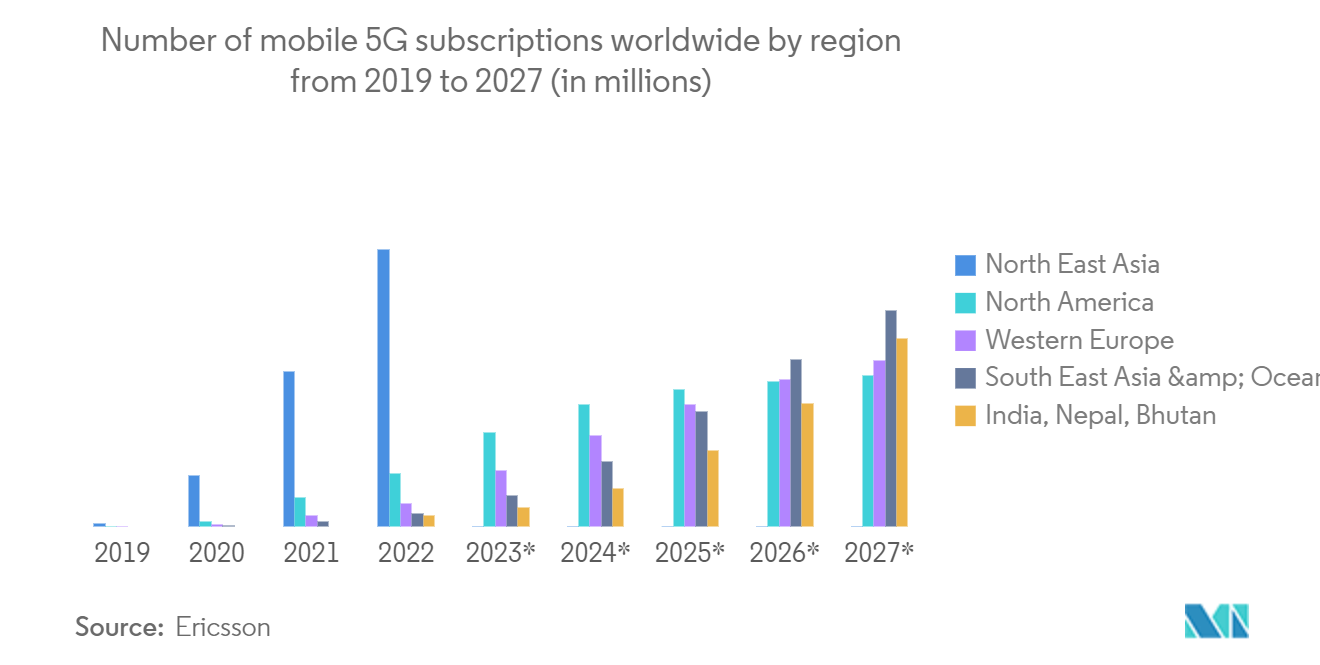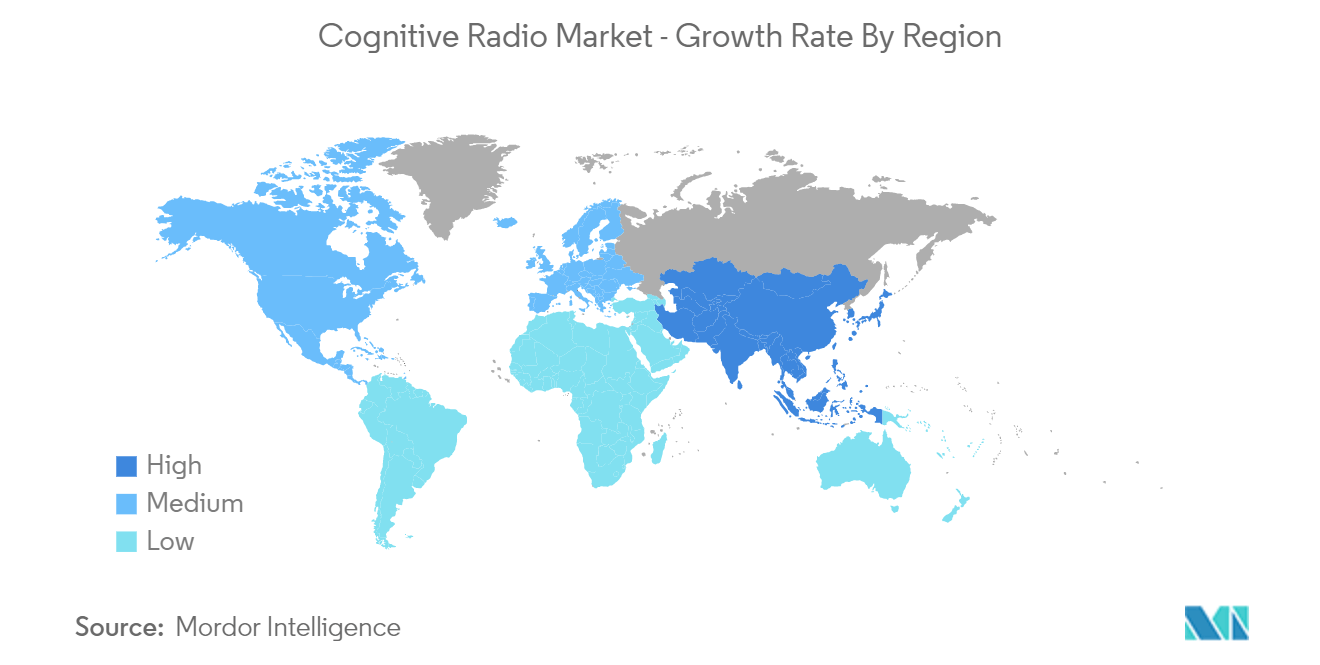Market Trends of Cognitive Radio Industry
Telecommunication Sector is Gaining Traction Due to Emergence of 5G Applications
- As most wireless communication systems are based on fixed frequency allocation, this results in low spectrum utilization. The growing demand for IoT for industrial use, connected vehicles, and other IT-enabled applications is accelerating the need for more spectrums. Cognitive radio hence plays an important role here as it automatically detects available channels in a wireless spectrum, enabling more communication to run concurrently without obstructing the licensed users.
- According to the GSMA, at the end of November 2022, more than 225 operators from 87 countries launched 5G services. By the end of 2023, the number of 5G mobile connections is expected to reach 1.5 billion. This growth will require additional spectrum resources in different frequency bands.
- To enhance dynamic user experiences in high-capacity scenarios, ZTE Corporation and China Telecom jointly developed a self-adaptive spatiotemporal cognitive network based on ZTE's Radio Composer. The network solution analyzes the traffic space distribution trend in different periods.
Ericsson and AXIAN Telecom announced a partnership to provide faster and more reliable mobile services throughout Madagascar while reducing network energy consumption and enhancing the 5G ecosystem. Through this partnership, AXIAN aims to boost digitalization across Madagascar and Tanzania, increasing network capacities and providing enhanced speeds to its customers.

Asia-Pacific to Register the Fastest Growth During the Forecast Period
- Countries in the Asia-Pacific region have been at the forefront of 5G mobile technologies. The first commercial 5G network was launched in South Korea. Though establishing 5G technology will take time, it is expected that it will reach 1.8 billion connections by 2025.
- The 700 MHz bands, particularly the 3500 MHz range, are the currently preferred frequencies for 5G and should be the primary focus for awards wherever feasible. The precise range of spectrum within 3500 MHz varies by country. There may be a need for extensive refarming work to ensure that mobile operators have access to a spectrum that does not suffer from interference while maximizing the bandwidth available.
- Nokia, Docomo, and NTT have partnered on emerging 6G technologies. The trio is projected to work to develop new spectrum technologies, a network as a sensor, and cognitive, automated, and specialized architectures.
- Japan's Ministry of Internal Affairs and Communications (MIC) will introduce a spectrum auction, including a millimeter-wave (mmWave) spectrum. The spectrum is expected to be used for fixed wireless access to increase coverage in stadiums and other extensive facilities and deliver broadband in residential areas.


